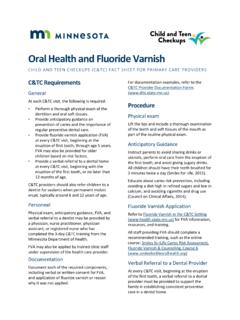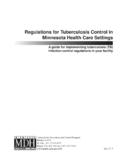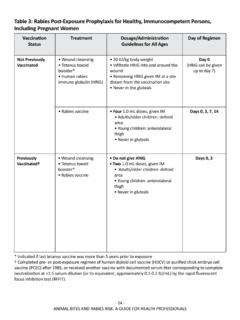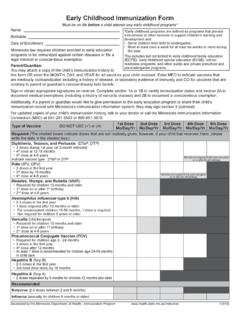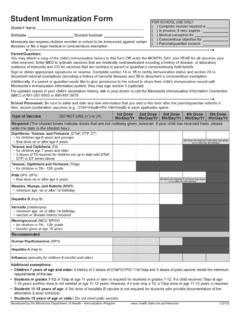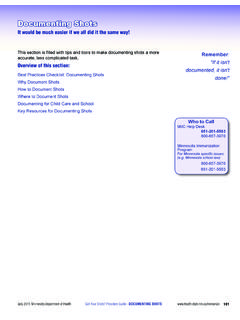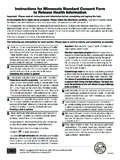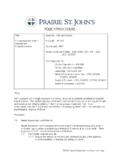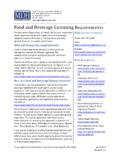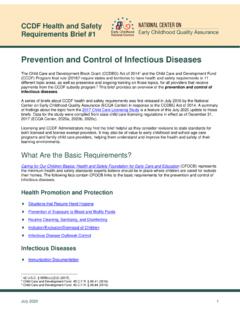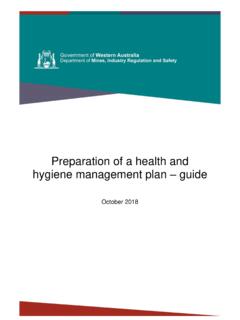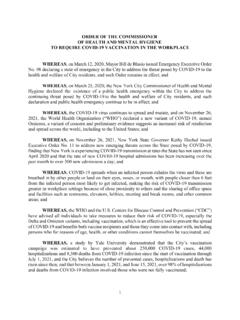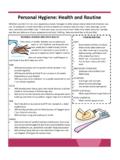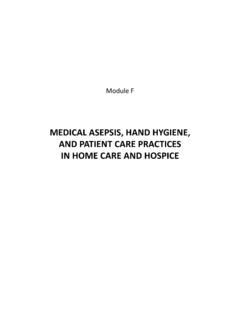Transcription of Contact Us - Minnesota Department of Health
1 Minnesota Department OF Health 1 of 4 What to Do if You Have Had Close Contact with a Person with COVID-19 1 / 2 5 /2022 You can spread COVID-19 to others starting a couple days before you have any symptoms and even if you never have any symptoms. It is important to separate yourself from others after an exposure so you do not spread the virus without knowing it. If you start to feel sick, get tested immediately and stay home and away from others. This includes people who are vaccinated or have tested positive for COVID-19 in the past three months. Visit COVID-19 Testing ( ). Exposure or close Contact : Spending a total of 15 minutes or more in a 24-hour period within 6 feet or less of people with COVID-19. In the K-12 indoor classroom setting the close Contact definition excludes students who were between 3 to 6 feet of an infected student if both the infected student and the exposed student(s) correctly and consistently wore well-fitting masks the entire time.
2 This exception does not apply to teachers, staff, or other adults in the indoor classroom setting. For more information about close contacts in schools, refer to Schools and Child Care COVID-19: Best Practice Recommendations ( ). Quarantine: Staying home and away from others when you might have been exposed to the virus. Isolation: Staying home and away from others when you test positive, feel sick, or have symptoms of the virus. Well-fitting mask: A mask that fits snugly over your nose, mouth, and chin, without gaps at the edges. Immunocompromised: A person with a weakened immune system. The immune system is how the body fights disease. Who does not need to quarantine If you have had close Contact with someone with COVID-19, you do not need to quarantine if: You are 5 years old or older and have completed ALL recommended vaccine doses, including a booster.
3 You had COVID-19 in the past three months. After exposure to the virus, you should still Wear a well-fitting mask around others for 10 days from the date of your last close Contact with someone with COVID-19. Watch for symptoms for 10 days. If you start to feel sick, stay home and away from others (isolate) and test immediately for COVID-19. WHAT TO DO IF YOU HAVE HAD CLOSE Contact WITH A PERSON WITH COVID- 19 2 of 4 If you are up to date on vaccinations: Get tested at least five days after close Contact . If you had COVID-19 in the past three months: You do not need to get tested at five days after close Contact if you do not have symptoms. Who needs to quarantine If you have had close Contact with someone with COVID-19, you need to quarantine if: You are not vaccinated. You are not up to date on COVID-19 vaccinations. How to quarantine Stay at home for at least five full days after your last close Contact with someone with COVID-19.
4 Watch for symptoms for 10 days. If symptoms develop, test immediately for COVID-19 and follow isolation recommendations. If possible, stay in a separate room and away from other people in your home. Use a separate bathroom if you can. Avoid sharing personal household items ( , food, dishes, towels, or bedding). Avoid public transportation, ride-sharing (such as Uber or Lyft), or taxis. WHAT TO DO IF YOU HAVE HAD CLOSE Contact WITH A PERSON WITH COVID- 19 3 of 4 If you are able to wear a well-fitting mask and do not develop symptoms Wear a well-fitting mask for 10 days when around others, even at home. Stay home and away from others for five days. Test on day five, if possible. If you test positive, start counting again from day zero and follow isolation recommendations. If you test negative, finish your full five days in quarantine.
5 On days six through 10: Avoid settings with people who are immunocompromised or at high risk of severe disease. Avoid travel. If you must travel, wear a well-fitting mask. Avoid places where you cannot mask ( , gyms, restaurants). Continue to wear a well-fitting mask around others. If you start to feel sick, stay home and away from others (isolate) and test immediately for COVID-19. If you are unable to wear a well-fitting mask This includes people under age 2, people with certain disabilities, and others who cannot consistently wear a mask around others. Stay home and away from others for 10 days. Test on day five. If you test positive, start counting again from day zero and follow isolation recommendations. If you test negative, continue to quarantine for the full 10 days. If you start to feel sick, stay home and away from others (isolate) and test immediately for COVID-19.
6 WHAT TO DO IF YOU HAVE HAD CLOSE Contact WITH A PERSON WITH COVID- 19 4 of 4 If someone in your home has COVID-19 If you live with someone who has COVID-19, stay home while they are in their isolation period, and then begin your quarantine period on the day their isolation ends. This may mean you need to quarantine for 10 days or more. If multiple people in your home have COVID-19, your quarantine period starts after the last person has completed their isolation. If you are able to wear a well-fitting mask If you are unable to wear a well-fitting mask Setting-specific recommendations People who live or work in a Health care or long-term care facility who have been vaccinated and are exposed to COVID-19 should refer to COVID-19 Recommendations for Health Care Workers ( ). People who live or work in group living and care facilities, such as a homeless shelter or correctional facility, and are exposed to COVID-19 should refer to Communities: Homeless service provider and Jails and correctional settings ( #shelter).
7 Businesses, facilities, or other private settings are encouraged to follow Minnesota Department of Health and CDC guidance but may choose to require longer isolation or quarantine periods. For more information on quarantine, visit Close Contacts and Quarantine ( ). For isolation recommendations, visit If You Are Sick or Test Positive ( ). Minnesota Department of Health | | 651-201-5000 | 625 Robert Street North PO Box 64975, St. Paul, MN 55164-0975 Contact to request an alternate format.
